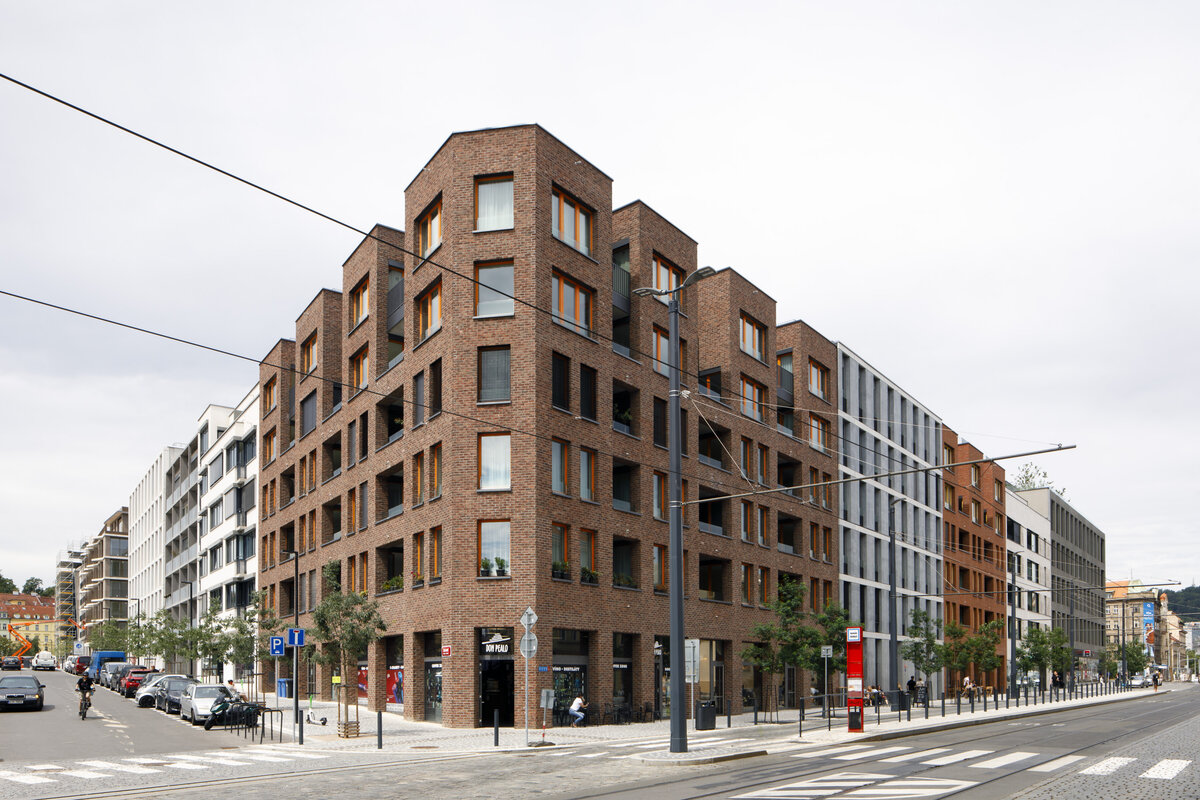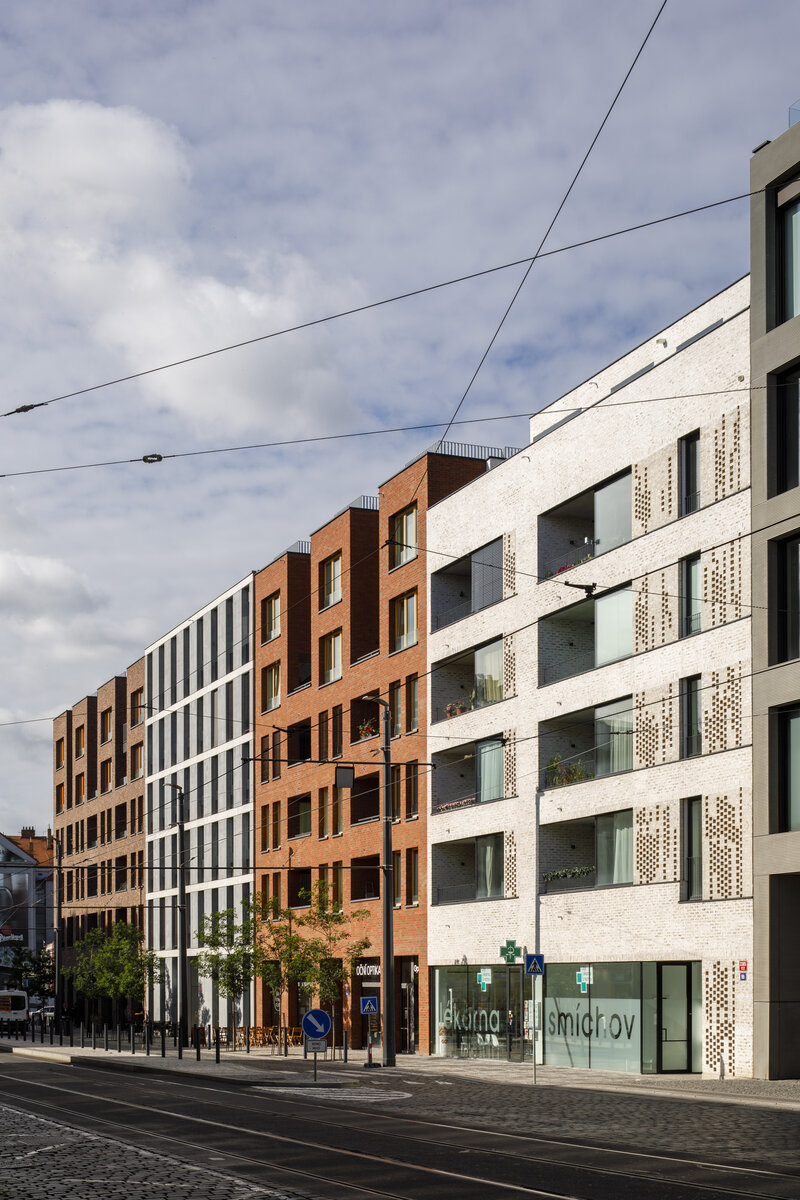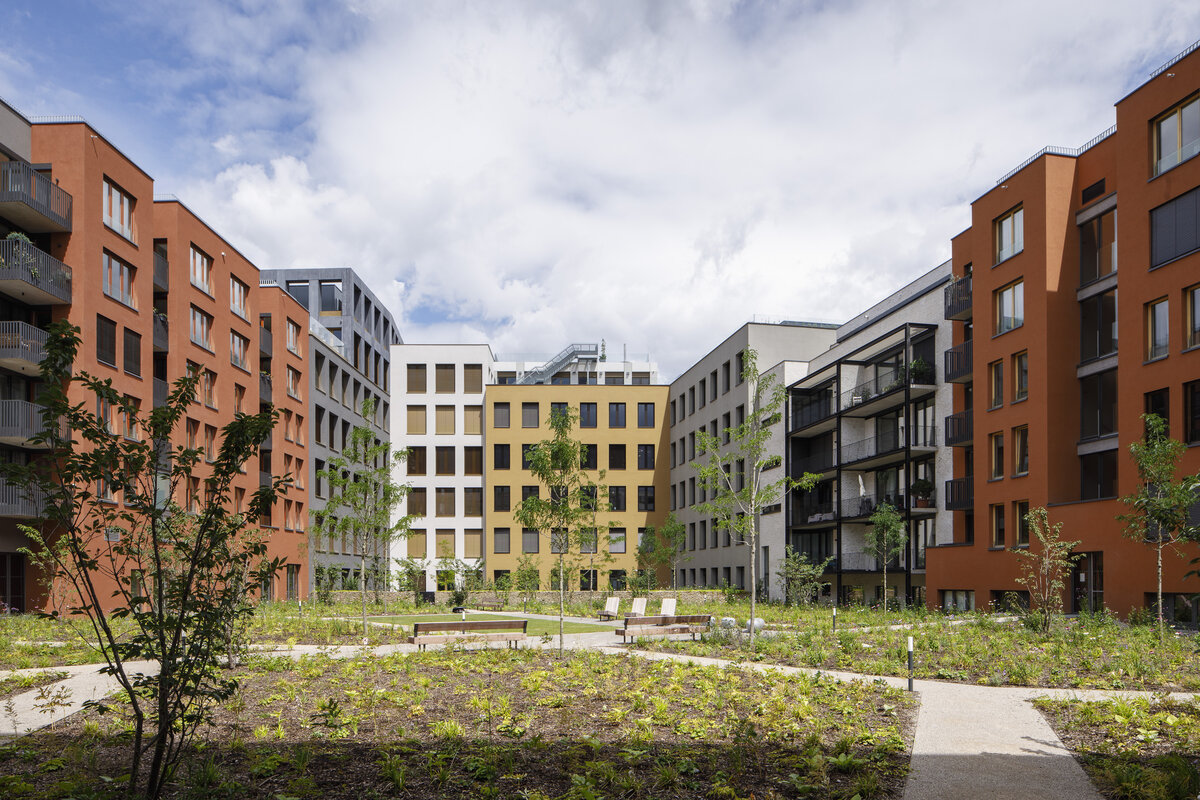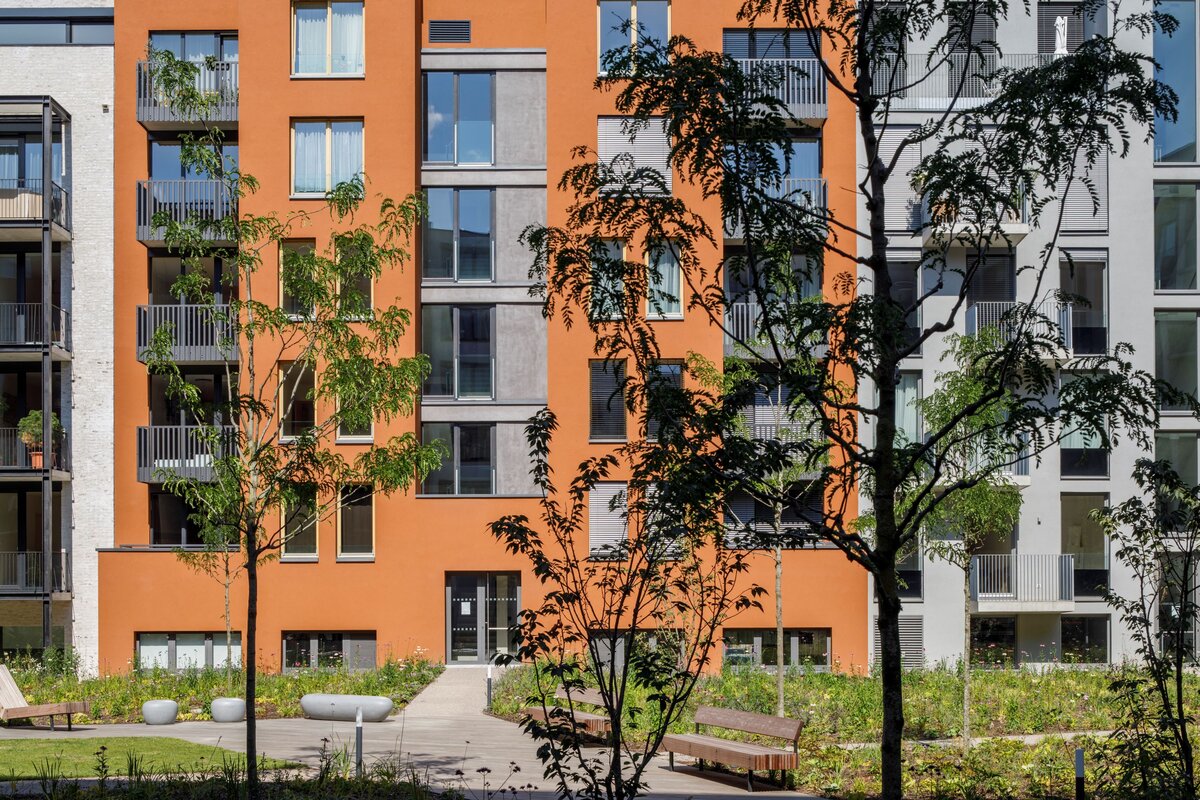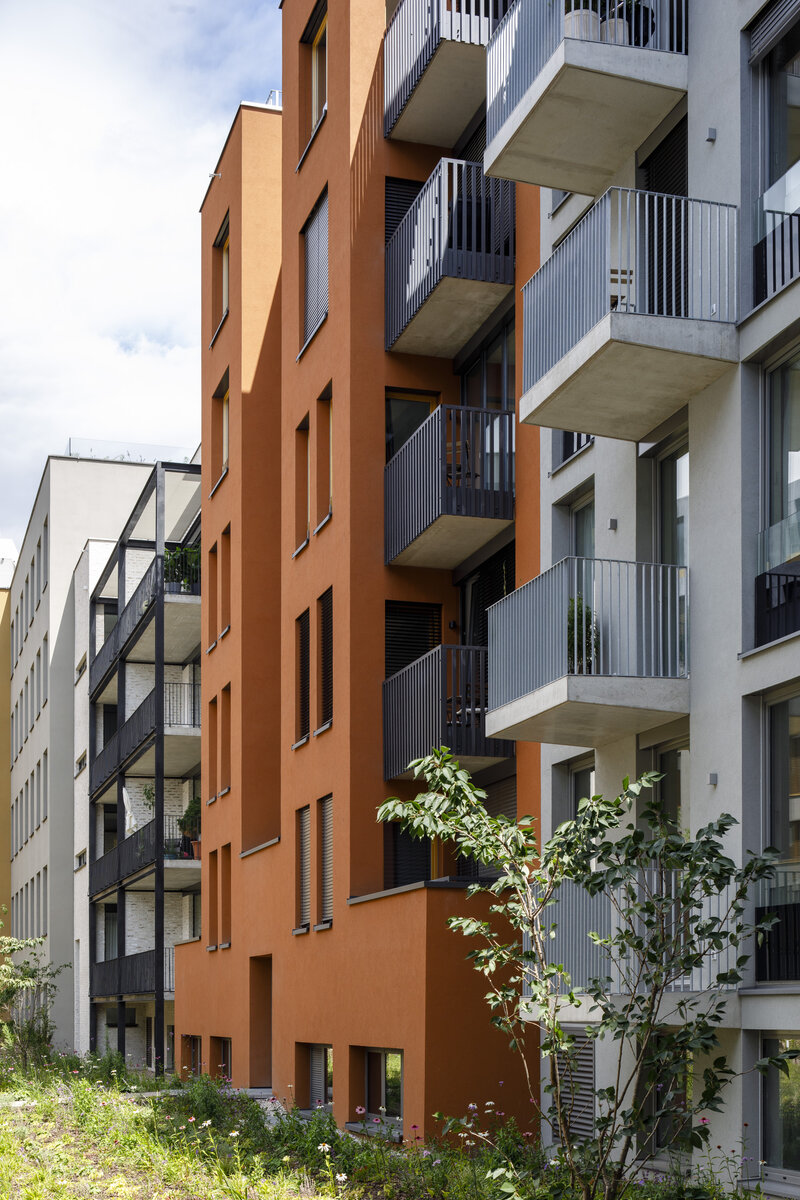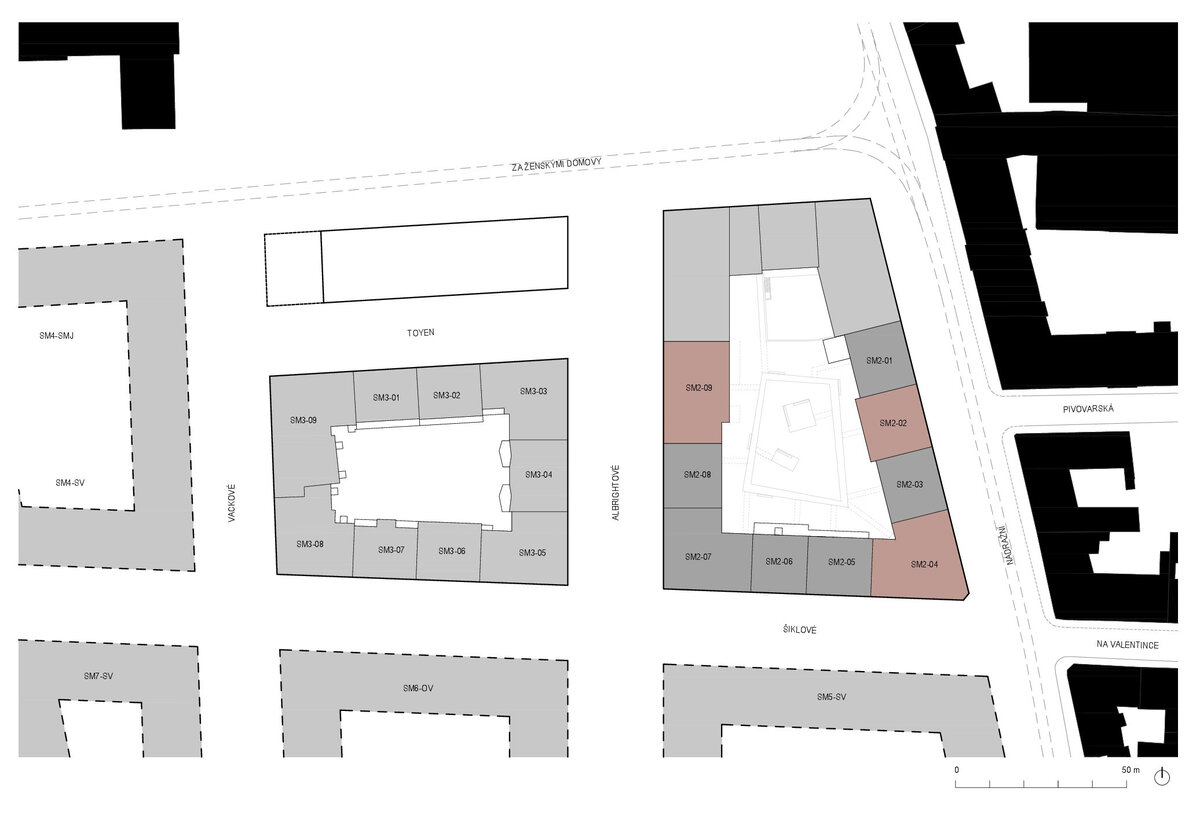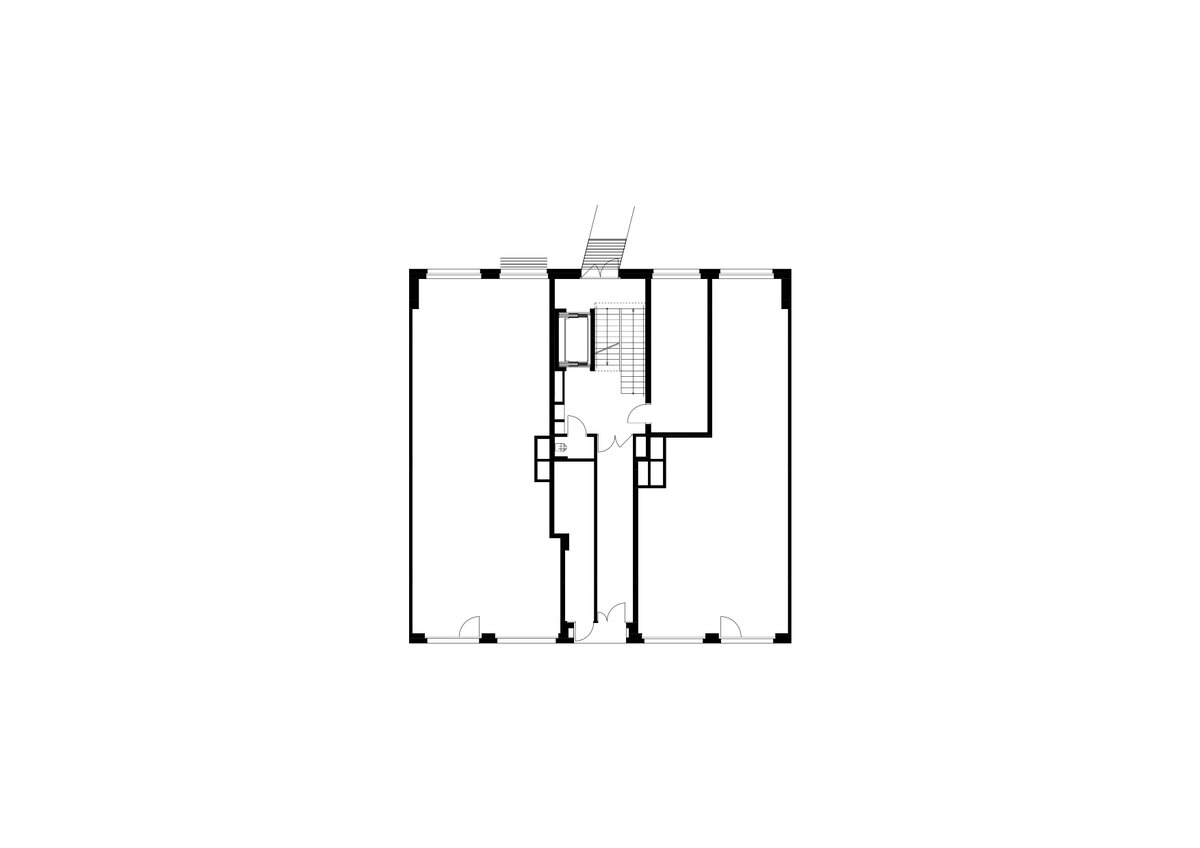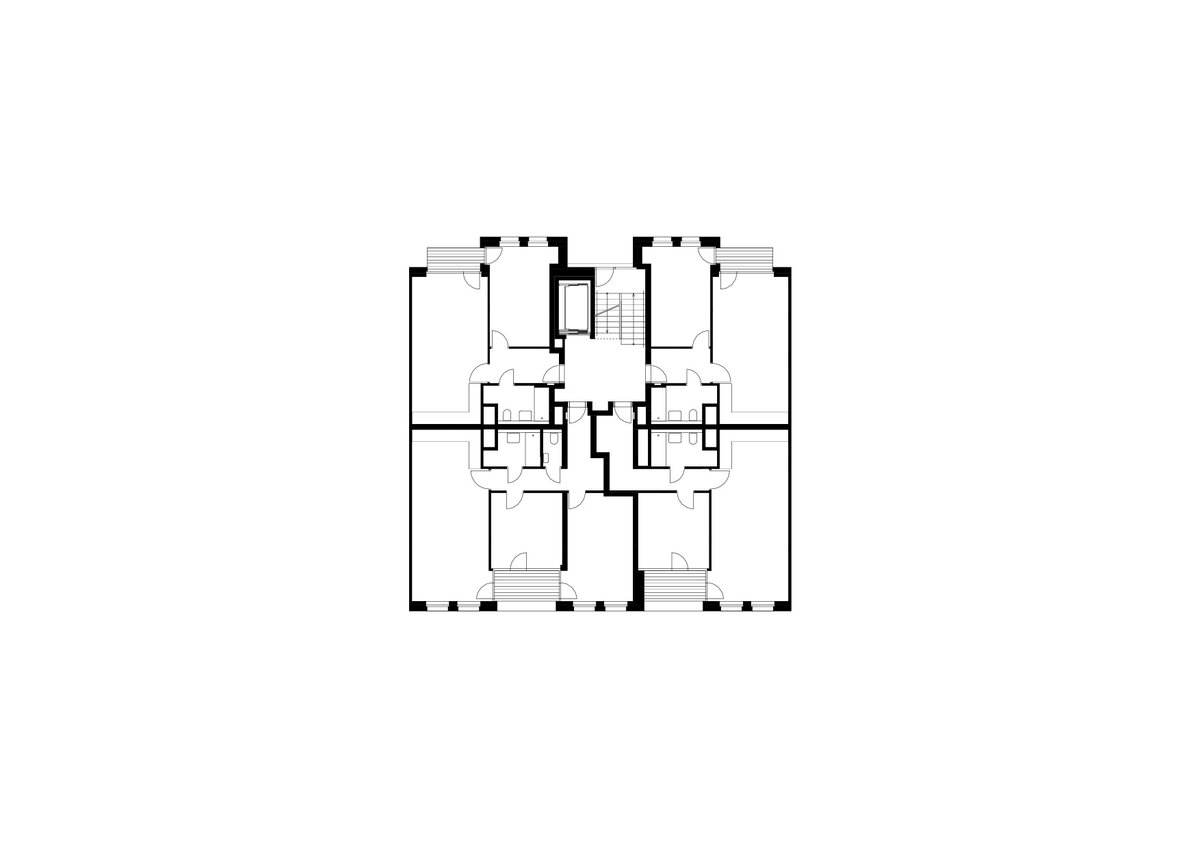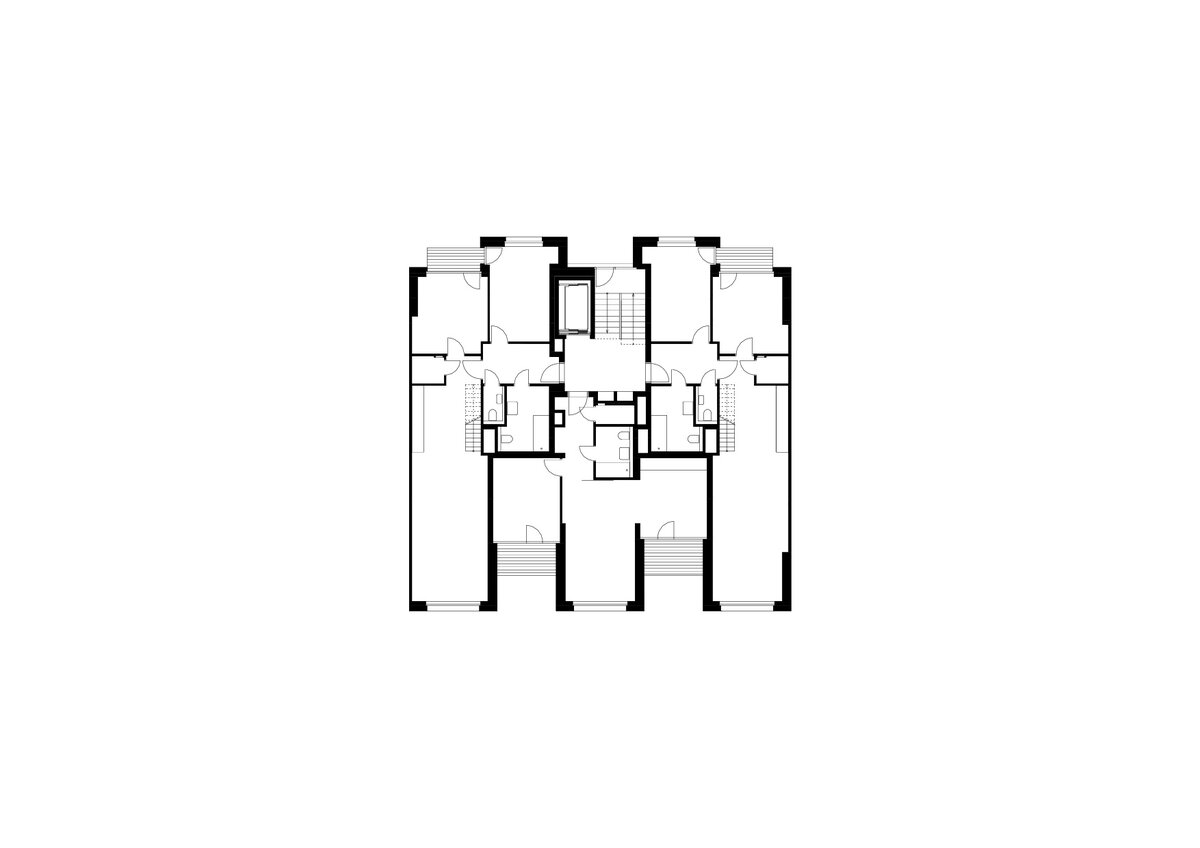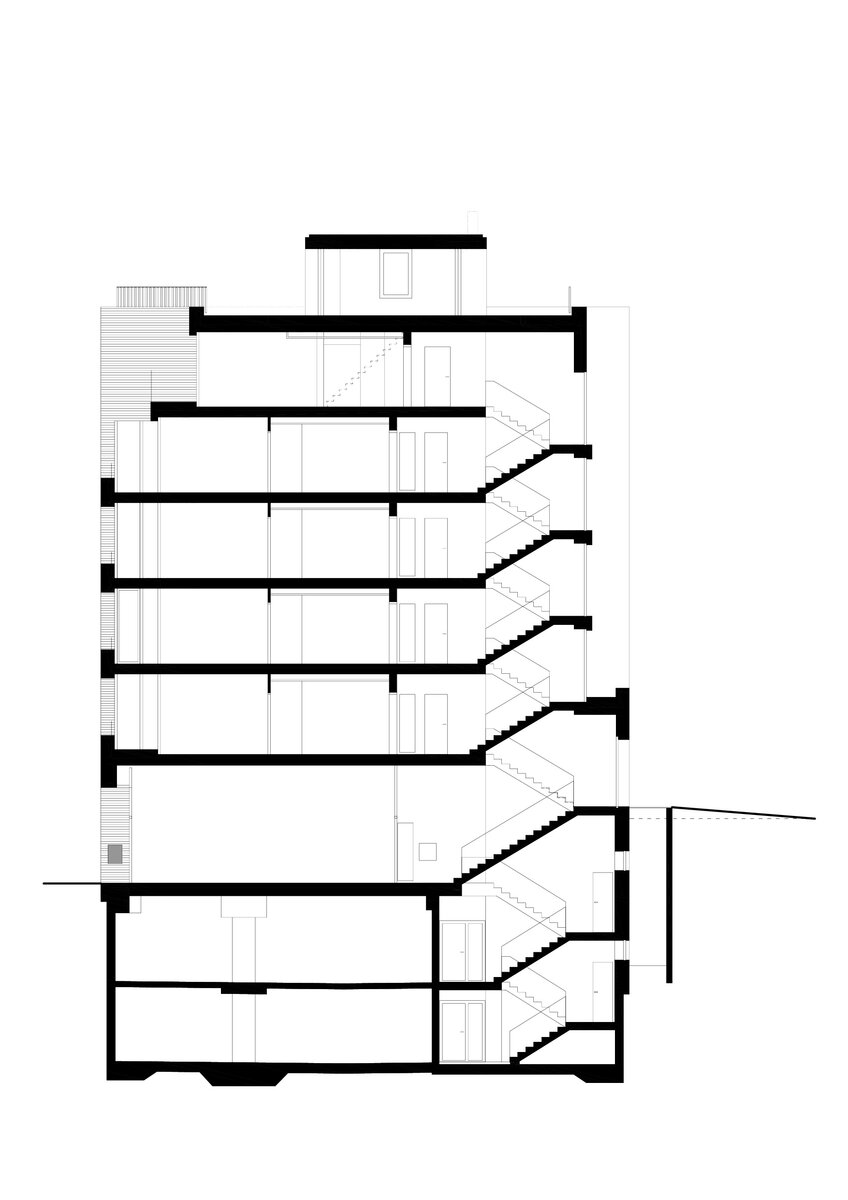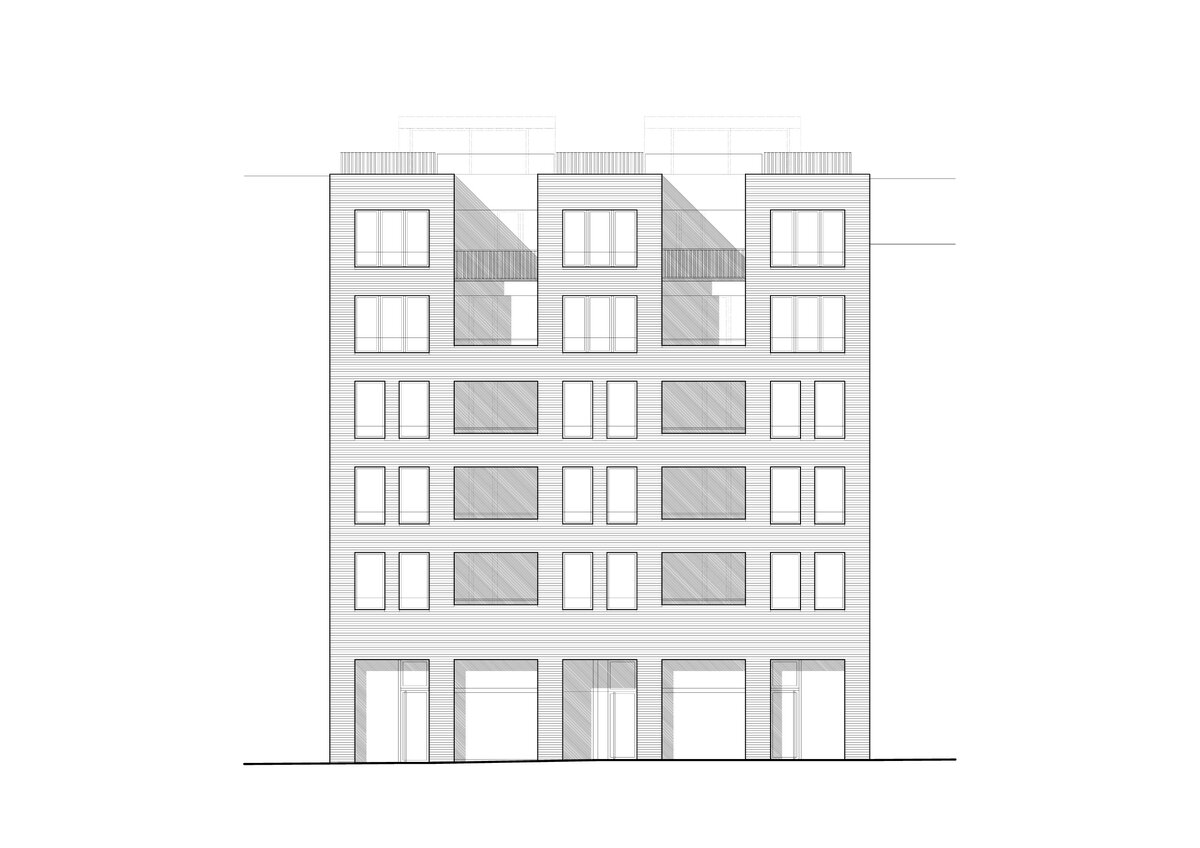| Author |
Ladislav Lábus, Vít Krušina, Petr Cimbulka, Lukáš Grasse, František Košař, Jan Pačka, Igor Šimon |
| Studio |
Lábus AA – Architektonický Ateliér, s.r.o. |
| Location |
Nádražní 3385/9a, 15000 Praha 5 |
| Investor |
Sekyra Group, a.s. |
| Supplier |
Společnost SMÍCHOV CITY SEVER - STRABAG a.s., ASPIRA Construction a.s., Instalace Praha, spol. s.r.o. |
| Date of completion / approval of the project |
July 2023 |
| Fotograf |
Tomáš Souček, Sekyra Group |
The basic elements of our design - the solid brick cladding and the distinctive silhouette that visually lowers the height of the houses - are based on the belief that in addition to the diversity of the environment, its integrity should also be strengthened. By designing the upper floors of three similar yet distinct apartment buildings in terms of materials and tower-like form, we aim to achieve the self-evident and unobtrusive individuality of traditional urban and rural development, which at the time was manifested by commonly shared values, technical possibilities and a reasonable degree of need to express the buildings' own identity.
We propose to allow for the individuality of individual houses, but within a framework of chosen regulative principles that would avoid the excessive heterogeneity of the development. We intend to unify the integrity and coherence of the environment through the material or similar characteristic volumetric design of the houses, supporting the identity and individuality of the houses not only through the facades but also through the material design itself.
We applied the general conceptual thesis of our competition design for all three blocks to the scale of the three proposed houses, which differ subtly, apart from the colour of the bricks, also in the width and frequency of the tower-like elements, naturally reflecting the different conditions and possibilities of the development of the individual plots.In our case, requiring the application of all three basic principles of designing staircase apartment buildings. Either on a narrow plot with a relatively small section width and a space-saving staircase solution directly illuminated from the courtyard façade (02), or on the contrary on a plot with a large staircase section width (09) or with a corner position of the house (04), where the staircase space is more comfortable and illuminated not only by the façade but also by skylights over the internal courtyards.The use of tower-like elements helps to reduce the scale of the development, visually lowering the height of the houses and thus recalling the pleasing proportions of the height of the historic buildings of Smíchov.
The SM2-02 house is located in the middle of the street frontage to Nádražní Street in an exceptional position opposite the mouth of Pivovarnická Street, which allows the lower floors of the house to make visual contact with the Vltava riverbank.
The house has 6 floors.
On the ground floor there are two commercial areas, on the typical floor there are 4 apartments - two facing the street and two facing the yard.On the top floor there are 3 apartments and both apartments at the gables have roof arbors that illuminate their deep layout and allow panoramic views of the city as well as the use of the residential terrace on the green roof of the house.There are a total of 19 apartments in the house, ranging in size from 2+KK to 4+KK. There is parking in two basements and basement cubicles for most of the apartments. The technical facilities of the house, including a boiler room common to the neighboring houses, are in the first basement. The main entrance is in the middle of the house, stairs with a passage elevator are located at the courtyard facade and allow wheelchair access to the semi-public garden in the courtyard.
The structural system is in accordance with the block design a wall system made of monolithic reinforced concrete, supplemented in the lower building and in the middle part of the ground floor by columns.
The floors above ground are separated from the lower structure by vibration springs. The lift shaft and stair arms are acoustically separated from the rest of the building structure.The partitions and partly the partitioning structures are designed in sand-lime masonry.Loggias and balconies are designed with ISO beams, terraces above the living space on the 2nd and 6th floors and on the roof are designed as pitched roof structures.
The perimeter walls of the house are contact insulated, the facade to Nádražní Street is lined with brick strips of light terracotta in combination with grey plaster in the receding parts of the upper floors.
The façade of the courtyard is covered with a red-brown trowel plaster and supplemented with grey plaster on the staircase cornices and the lift shaft. The ground floor has aluminium doors and shop windows with metallic anthracite paintwork, the windows of the flats are wooden.
Green building
Environmental certification
| Type and level of certificate |
BREEAM
|
Water management
| Is rainwater used for irrigation? |
|
| Is rainwater used for other purposes, e.g. toilet flushing ? |
|
| Does the building have a green roof / facade ? |
|
| Is reclaimed waste water used, e.g. from showers and sinks ? |
|
The quality of the indoor environment
| Is clean air supply automated ? |
|
| Is comfortable temperature during summer and winter automated? |
|
| Is natural lighting guaranteed in all living areas? |
|
| Is artificial lighting automated? |
|
| Is acoustic comfort, specifically reverberation time, guaranteed? |
|
| Does the layout solution include zoning and ergonomics elements? |
|
Principles of circular economics
| Does the project use recycled materials? |
|
| Does the project use recyclable materials? |
|
| Are materials with a documented Environmental Product Declaration (EPD) promoted in the project? |
|
| Are other sustainability certifications used for materials and elements? |
|
Energy efficiency
| Energy performance class of the building according to the Energy Performance Certificate of the building |
B
|
| Is efficient energy management (measurement and regular analysis of consumption data) considered? |
|
| Are renewable sources of energy used, e.g. solar system, photovoltaics? |
|
Interconnection with surroundings
| Does the project enable the easy use of public transport? |
|
| Does the project support the use of alternative modes of transport, e.g cycling, walking etc. ? |
|
| Is there access to recreational natural areas, e.g. parks, in the immediate vicinity of the building? |
|

